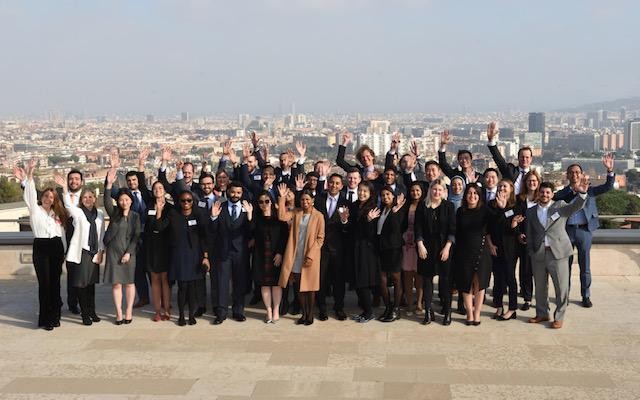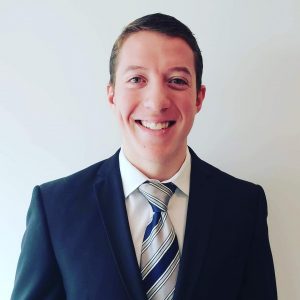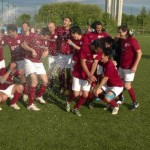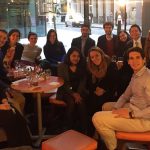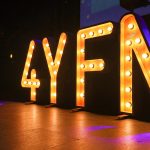The Roland Berger Case Competition
The task: to put together a go-to-market plan and presentation to launch Visualfy’s innovative products, Deaf Smart Space (DSS) Home and DSS Places.
The challenge: to complete the task in ~30 hours and do it better than some of the top business schools in the world (Booth, CEIBS, ESADE, HKUST, IESE, INSEAD, LBS, NUS, Ross and Tuck).
The result: an incredible experience, a whole lot of fun and most importantly, tons of learning. This article shares some of the learnings the participants and I took from the experience, particularly as it relates to (1) Visualfy and the deaf community, (2) working effectively in international teams and (3) serving startup clients.
1. Visualfy and the Deaf Community
 Visualfy is one of the most innovative B Corporations, located in Valencia, Spain. They exist to “create innovative technology for people with hearing loss, and for companies and institutions committed to accessibility.” Upon reading the case and hearing from Maria Jose Milan Trujillo, the Chief Marketing and Strategy Officer, their commitment to this community was inspiring – not only did they make unique products, but Visualfy also employs almost half its staff with talent who have hearing loss, and require everyone to learn sign language.
Visualfy is one of the most innovative B Corporations, located in Valencia, Spain. They exist to “create innovative technology for people with hearing loss, and for companies and institutions committed to accessibility.” Upon reading the case and hearing from Maria Jose Milan Trujillo, the Chief Marketing and Strategy Officer, their commitment to this community was inspiring – not only did they make unique products, but Visualfy also employs almost half its staff with talent who have hearing loss, and require everyone to learn sign language.
The teams were exposed to the deaf community’s reality around the world – that the hard of hearing are often unheard, misunderstood, and largely unserved. This world was built for those who have all their senses intact, and while we have made some strides especially for the physically disabled, we have not made proper adjustments for people who have hearing loss. Imagine an alarm goes off at work – most workplaces do not have any visual cues to help someone who cannot hear the alarm. Governments have laws that ensure equal access and safety in public spaces, but those laws are often broken when it comes to serving people with hearing loss.
Perhaps more important to equal access is the way in which we perceive and engage with the deaf community. Maria highlighted that most people tend to stereotype deaf people as less intelligent or talented, just because they cannot hear – which leads to a lack of opportunities for talented deaf people. Further, people often interact in paternalistic ways with those who have hearing loss, assuming they cannot take care of themselves. Because most people do not know sign language, deaf people do not have the same opportunities to build relationships and establish networks that could propel their success. Many talented people with hearing loss do not have the same educational and employment opportunities as their hearing-able peers. Visualfy is shedding light on this issue, as they hire deaf people into all types of roles, from engineering and finance to marketing and sales, knowing they are just as talented. Maria even shared that her employees that are hard of hearing are often the best talent they have.
2. Working in International Teams
This year was a particularly challenging year for all the teams – the INSEAD team flew in on a red-eye flight from Abu Dhabi, the IESE team was put together last minute, and the CEIBS and HKUST teams (and 1 member from the Booth team) were remote because of travel restrictions due to the Coronavirus! Further, a bunch of teams had classes and exams to worry about, further compounding the pressure of creating the best proposal within a day. In the face of these challenges come the perfect learning experiences, of which three I will discuss: pulling together a great team, establishing structures and managing productive conflict.
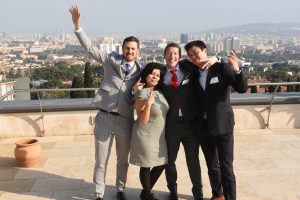
Team IESE!
Recruiting the Right Team
In business school, case competitions are the norm – and we are challenged to pull together the best group of people possible to compete with very little time. Over 4 competitions, I learned that half the battle is finding the right team, from investment in the project to balance of skills and personalities – Shalom Akinboboye from the INSEAD team would agree, saying, “I think we had compatible skill sets and we had done a bit of preparation beforehand.” Sagnik (also from INSEAD) shares his team’s balance of skills, including “Shalom’s marketing genius, Elie’s slide wizardry, Subir’s financial modeling skills, and Sagnik’s in-depth research.”
My own reflection is that our IESE team, which was formed a few hours before the competition began, should have invested more time to build relationships and learn about each other so that we could better leverage each other’s skills and expertise in a short period of time.
Managing Productive Conflict
Beyond finding the right people and organizing the team is fostering the best team environment. Sagnik described his team’s last-mile environment to put together their presentation: “the team put some music on, cracked open a few beers, created an environment of psychological safety, constructive criticism, and encouraging spirit.” But beware of teams that agree on everything and prioritize harmony – Melanie Paurus from ESADE explained her learning: “Conflicting ideas and differing opinions are essential to building thorough proposals and client solutions. The dynamic of having to defend your ideas and win people over to support them has the potential to simultaneously refine and fortify your proposals, growing your ability to see–and value–differing perspectives.”
While the value of productive conflict is clear, managing these differing opinions is easier said than done – it requires strong facilitators, participants open to new ideas and structures to discuss and make decisions. Jae Ko from Chicago Booth shared his thoughts on structure: “Our team was comprised of students with differing backgrounds…which led to differing opinions on how to solve the problem and what the recommendations would be. Looking back, the one thing that we could have done better was to have a session early on where each of the team members could share their thoughts and then from there collectively weigh the pros and cons. This would have led to each of us feeling like our voices were heard while at the same time collectively coming to a decision on what direction to go.”
Managing Remote Teams
The CEIBS and HKUST teams both competed remotely, due to Coronavirus travel restrictions. Parisa Manjarekar shares her experience:
“With the onset of the holidays started the Coronavirus chaos, [we were] trapped in various locations across China…In the midst of all [the difficulties with visas and passports], we received a polite request from the organizing team to compete remotely and thus, started our next phase of ensuring a considerable fair chance in an already compromised position. We aimed at achieving the best outcome of our team’s location – one in Europe and three on-campus in Shanghai. But the increasing intensity of the virus made it difficult for Tina to fly back from Beijing to Shanghai as well as for Alice to travel from one end of Shanghai to the other. We decided it would be best if we all just coordinated online.
After a long chain of communication with the organizing team, we agreed on a common platform ‘Zoom’ for communication. Learning and getting used to the platform was a task for our team and we got used to it via two-three internal meetings to set the action plan.
Our biggest challenge was competing from different time zones as we worked all night both days up until 4am. The other challenge was group work. Though we brainstormed over the case effortlessly via Zoom, the absence of coordination while actual working made a huge difference. The feedback from the group to every individual’s work was lagged as we only discussed it when we connected for a common meeting. Another challenge was the preparation behind the final presentation and the actual presentation. [Our approach was] one person controlling slides, exhibiting 100% coordination to ensure smooth delivery of the presentation. [Unfortunately], the smoothness was again challenged by weak network connectivity at times.
The entire setup was a huge learning experience. We came to realize the importance of physical presence to convey ideas and thought with the most precision. And lastly, the resilience our team demonstrated through [all these] difficulties was surprising yet motivating to each of us and everyone around.”
3. Serving Clients, especially Startups
Thanks to the mentorship and feedback from Roland Berger partners and Maria from Visualfy, we left with a lot of advice for serving future clients.
Always do financials, and be ready to explain them.
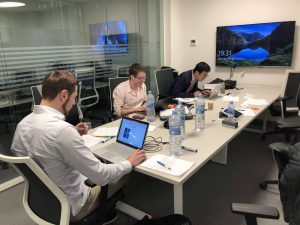
Poring over the financials during the preparation.
We see on TV shows all the time – caricatures of business people who show ridiculous projections – perhaps driven by over-optimism, a desire to please the client or to win a contract. Financial projections are always grounded in many assumptions, meaning the numbers reflect some amount of uncertainty. Those assumptions should be clearly stated and conservative. The financial projections made by the IESE team, which were likely the most conservative of any team, were still overly optimistic because we did not fully appreciate how challenging it would be to sell the product. Furthermore, when modeling financially, most teams did not fully account for the costs of staffing, administration, advertising, and other line items. In the end, a viable business will come down to financial sustainability, and any recommendations should include the financial implications, now and in the future.
Startups Need a Plan A, B, C and Probably More
Just like financials can be hard to project, startups by nature are new and their success or failure can be unpredictable. In this case, Maria gave teams advice to have a flexible plan and backup plans, so that the startup can pivot and pursue different opportunities with velocity. When Maria shared the actual story of Visualfy’s progression over 3 years, many of the strategies they used were the same strategies we recommended but were not successful. A great way to exceed a client’s expectations is to have a set of alternative approaches and strategies to the Plan A that both allow the client to pick and choose what resonates, as well as to adapt in case Plan A did not work.
Additionally, the Chicago Booth team had a smart idea for the DSS Places product, which most teams decided to de-prioritize. They thought to use a series of pilots of the product in different places, both to test out the product, as well as see which types of clients could most benefit from the product. This approach was taken by Visualfy and the DSS Places product ended up being more of the focus of the business.
Providing Vision and Perspective
Perhaps the most important piece of feedback our team received was to show the client something completely new that they have not thought about or seen before. In this case, our client was an innovative artificial intelligence software and accompanying hardware, so it had various paths to choose from to be successful. The best teams were those that saw beyond the client’s current product, pricing, and strategy and open new possibilities for the business. For example, this product had artificial intelligence software that is collecting massive amounts of audio and sound data that could be monetized and used for other products and services.
Conclusion
I know I speak for all the participants that the competition was an incredibly valuable experience. The most memorable moments were certainly the dinners we shared together as colleagues from across the world. All of the teams showed incredible resilience in the face of all their challenges and should be proud of the work they did on behalf of Visualfy. Please join me in congratulating all the teams on a job well done!
Special Note: Thank you so much to those who made this event happen, from our IESE organizers to Roland Berger mentors, and most importantly, Maria and Visualfy, who gave her time and shared her experiences to help us learn and grow. This was a truly unforgettable experience!
[This article is re-posted from Linkedin]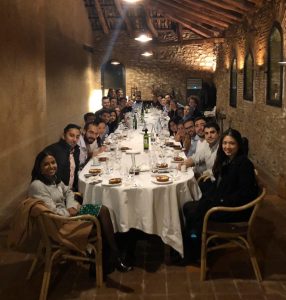
Wrapping up a few intense days with a celebration dinner with all the participants.
Pursue your dream MBA! Take these next steps today:


